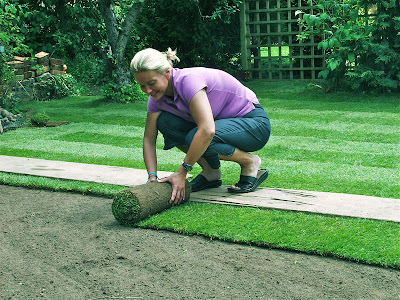If you have never come across a hummingbird hawk moth before then your first time may come as a bit of a shock, a pleasant one of course. The reason why is this, the hummingbird hawk moth is responsible for the largest number of mistaken identity cases of any animal within the British Isles. Unsurprisingly this would be the actual hummingbird.
 |
| An actual hummingbird |
It beats its wings so fast that they are no more than a blur, and like a true humming bird they are able to hover whilst feeding for nectar with a long uncoiled proboscis. To complete the illusion, the speed of their beating wings is such that they emit the trade mark hum from which the hummingbird gets it name.
.
Compared to our native moths it’s much more colourful too. Its wings are coloured green or reddish brown, while its dark body is punctuated with dots and stripes of yellow and white
So how it has such an exotic species managed to find its way to our emerald shores. Abundant and resident in all Mediterranean countries, the Humming bird moth migratory habits are well documented with many thousands moving northwards in Europe during the spring. There is also evidence of a return migration in the autumn. Although they are known to successfully breed in this country, they are generally unable to survive our winters. This means that we are always reliant on new colonies coming up from southern France.
How to attract the hummingbird hawk moth
Abundant and resident in all Mediterranean countries, the Hummingbird Hawk moth makes an annual migratory journey moving northwards in Europe during the spring. With a bit of luck - and a suitably warm head wind - they reach the south eastern shores of Great Britain during the summer where they lay their eggs and make the most of our seasonal, nectar-rich native plants.
Unfortunately with modern farming techniques and ever increasing, suburban paradise, native plants are in short supply and this can be a severe problem when it comes to the supplying energy rich needs of this stunning and hard-working creature.
To increase your chances of attacting the hummingbird moth to your garden, there are a number of plants that you can add to your borders that can help to encourage them. Of particular importance is the Galiumverum, more commonly known as Lady's Bedstraw or Yellow Bedstraw. This is the plant that the adults prefer to lay their eggs on, although they have also been known to hatch on Centranthus, Stellaria and Epilobium.
So how it has such an exotic species managed to find its way to our emerald shores. Abundant and resident in all Mediterranean countries, the Humming bird moth migratory habits are well documented with many thousands moving northwards in Europe during the spring. There is also evidence of a return migration in the autumn. Although they are known to successfully breed in this country, they are generally unable to survive our winters. This means that we are always reliant on new colonies coming up from southern France.
How to attract the hummingbird hawk moth
 |
| A Hummingbird moth |
Unfortunately with modern farming techniques and ever increasing, suburban paradise, native plants are in short supply and this can be a severe problem when it comes to the supplying energy rich needs of this stunning and hard-working creature.
To increase your chances of attacting the hummingbird moth to your garden, there are a number of plants that you can add to your borders that can help to encourage them. Of particular importance is the Galiumverum, more commonly known as Lady's Bedstraw or Yellow Bedstraw. This is the plant that the adults prefer to lay their eggs on, although they have also been known to hatch on Centranthus, Stellaria and Epilobium.
 |
| Another Hummingbird moth |
The key to attracting and retaining subsequent visits is this succession of suitable plants that will provide energy rich pollen and nectar for the whole season. With the continual loss of habitat combined with the over use of systemic insecticides - which kill off both pest insects as well as beneficial pollinating insects - it is down to us to provide the natural resources that modern farming and gardening practices have taken away.
SUMMER
.
Agastache . This member of the lamium family, this fragrant plant produces upright spikes of tubular, two-lipped flowers develop at the stem tips in summer. The flowers are usually white, pink, mauve, or purple, with the bracts that back the flowers being of the same or a slightly contrasting colour.
Buddleia davidii. This family of easy-to-grow cultivated plants are commonly known as butterfly bush for their highly attractive nature towards members of the butterfly species - amongst others. This shrub is both hardy and deciduous and flower profusely in July on new season’s wood. They are lime tolerant and will do well in a good loamy soil in full sun.
Foxgloves. This native European woodland plant is now readily available in many cultivated forms. It is a popular biennial for shaded places, perennial if the flower stems are cut back promptly to prevent self-seeding. They are happy in most good soils but will require a healthy dose of well-rotted farm manure to get the most out of them. With some of the new varieties looking absolute spectacular in flower, they are a must for the ornamental garden; just make sure that they are watered well in dry weather.
Honeysuckle. This native European climber is an old favourite when it come to pollinating insects, and their rings of curved, almost tubular shaped individual flowers are ideal for long-tongued flying insects like the hummingbird hawk moth. Plant so the roots are in shade but the stems and flowers can grow out into the sun.
Syringa. This group of hardy, deciduous shrubs and small trees are still very popular for their early summer flowers. There are a number of very suitable species as well as cultivated varieties, all of which will do well in any fertile soil, in full sun or partial shade.
.
LATE SUMMER – EARLY AUTUMN
Delphiniums. This is one of the classic flowers of the traditional summer garden but keep away from the double flowering types are these produce little nectar and are unsuitable for pollinating insects. Their tall upright spikes laden with intensely-coloured flowers are a feature of herbaceous borders, where they are best grown near the back to add height and drama. Although the flowering season can be relatively short, delphiniums can often be coaxed into producing a few later flowers if the flower spikes are cut down as soon as the blooms are over.
Escallonia. This family of plants originate from South America. For best flowering, choose evergreen varieties which will come into bloom from July until August. They grow well in any ordinary, well-drained soil in an open and sunny position.
Monarda species. So popular are plants from this family with bees that its common name is known as Bee Balm, but they are just as popular with other beneficial insects. This native of North America has very distinctive flower-heads with each one consists of a large number of curving tubular flowers growing out from a central point. As the flowers mature they create a shaggy and characteristic dome of petals. The plant has a long flowering season, from early summer to early autumn, and blooms almost continuously if dead-headed periodically. It prefers free-draining yet moist oil in full sun although it can tolerate semi shade.
Sedum spectabile. A native of china, this evergreen is a stalwart of late summer nectar with its flowers reliably appearing from September to October. Suitable for any ordinary, well-drained garden soil this hardy succulent species is ideal for dry borders in full sun.
Also consider plants such as the single flowered petunias, red valerian, jasmine, lilac, , and phlox, Nicotiana, native Primula and viola varieties, herbacous and bedding Verbena, Echium, and Stachys.
Of course there are other plants the hummingbird hawk moth is interested in which has nothing to do with their flower or how much nectar they produce and these are the plants that they lay their eggs on which become a nutritious meal for their caterpillars when they hatch. Of particular importance is the Galium verum, more commonly known as Lady's Bedstraw or Yellow Bedstraw. This is the plant that the adults prefer to lay their eggs on, although they have also been known to hatch on Centranthus, Stellaria and Epilobium.
.
For more information click onto:
All About Coyotes
All about Gorillas
All about Polar Bears
All About Wolves
Alligator Facts
Discovered - Moth New to Science Found in UK
How to Feed Butterflies
All about Gorillas
All about Polar Bears
All About Wolves
Alligator Facts
Discovered - Moth New to Science Found in UK
How to Feed Butterflies
The Decline of Butterfly and Caterpillar Habitat
The Coyote
The Differences Between Crocodiles and Alligators
The Differences Between Horses and Zebras?
The Duck-Billed Platypus
The Giraffe
The Hippopotamus
The Hummingbird
The Jaguar
The Jesus Christ Lizard
Tigers
The Koala
The Komodo Dragon
The Portuguese Man of War
The Saltwater Crocodile
The Wild Coyote Dog
The Wolf
The Hummingbird Moth
What Animal is Sid from the Film 'Ice Age'?
What does a Wolf Eat?
What is an Alligator?
What are Bats?
What is a Butterfly Garden?
What do you Feed Hummingbirds?
What do Komodo Dragons Eat?
What is a Duck-Billed Platypus?
What is a Coyote?
What is a Dolphin?
What is a Flying Fish?
What is a Giraffe?
What is a Gorilla?
What is a Hedgehog?
What is a Hummingbird?
What is a Jaguar?
What is a Komodo Dragon?
Where can you find Komodo Dragons?
What is a Koala?
What is a Manatee?
What is a Polar Bear?
What is a Portuguese man of war?
What is a Wolf?
What is 'Slash and Burn' Farming and How does it Affect the Rainforests?
When do you feed Hummingbirds?
Where to find Dolphins?
Where can you find Gorillas?
Where to find Hummingbirds?
Where do Wolves Live?
The Coyote
The Differences Between Crocodiles and Alligators
The Differences Between Horses and Zebras?
The Duck-Billed Platypus
The Giraffe
The Hippopotamus
The Hummingbird
The Jaguar
The Jesus Christ Lizard
Tigers
The Koala
The Komodo Dragon
The Portuguese Man of War
The Saltwater Crocodile
The Wild Coyote Dog
The Wolf
The Hummingbird Moth
What Animal is Sid from the Film 'Ice Age'?
What does a Wolf Eat?
What is an Alligator?
What are Bats?
What is a Butterfly Garden?
What do you Feed Hummingbirds?
What do Komodo Dragons Eat?
What is a Duck-Billed Platypus?
What is a Coyote?
What is a Dolphin?
What is a Flying Fish?
What is a Giraffe?
What is a Gorilla?
What is a Hedgehog?
What is a Hummingbird?
What is a Jaguar?
What is a Komodo Dragon?
Where can you find Komodo Dragons?
What is a Koala?
What is a Manatee?
What is a Polar Bear?
What is a Portuguese man of war?
What is a Wolf?
What is 'Slash and Burn' Farming and How does it Affect the Rainforests?
When do you feed Hummingbirds?
Where to find Dolphins?
Where can you find Gorillas?
Where to find Hummingbirds?
Where do Wolves Live?
Which Plants can Attract Bats into the Garden?
Wolf Conservation
Wolf Facts
Images care of http://suziesden.com/?m=20100813 and http://suziesden.com/?m=20100813 and http://www.wallcoo.net/flower/cosmos/[wallcoo_com]_cosmos_flower_picture_ez151.html
Wolf Conservation
Wolf Facts
Images care of http://suziesden.com/?m=20100813 and http://suziesden.com/?m=20100813 and http://www.wallcoo.net/flower/cosmos/[wallcoo_com]_cosmos_flower_picture_ez151.html
















.jpg)
































































